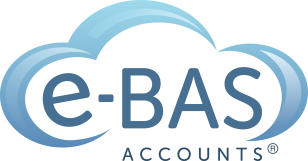When your Side Hustle becomes a Business – Next Steps

In our last blog, we covered whether or not a side hustle like selling items on eBay or being an influencer could be a business and how to tell when a side hustle turns from being hobby-like activity to a business activity. We looked at a list of questions the ATO may ask to help you determine your answer and we quoted the ATO’s definition of what constitutes a business:
“Typically, a business involves a series of continuous and repeated activities that you undertake with the intention of generating a profit. Profit can take the form of money, but it can also be earned through other means, such as receiving goods or services (such as a barter deal). A one-time transaction may also qualify as a business if it is either:
- intended to be repeated
- the first step in starting a business.
You can operate one or multiple businesses simultaneously.“
So, given that you may have reviewed your situation and have ascertained that your side hustle is indeed a business, what do you need to do next?
There are several steps you need to take when beginning a business. These are listed below:
- Make sure you have a tax file number.
- Visit your accountant and ask for help regarding the best structure under which to operate your business. This may be a sole trader, company, trust or partnership or some variation of these structure types.
- Get an ABN via the Australian Business Register website.
- Register for GST if your GST turnover is or will be, $75,000 over the next 12 months. This can include products or services you’ve received instead of money. Note, if your side hustle is ride-sourcing, you need to register for GST from the day you start, regardless of how much you earn.
- Register your business name. This can be done on the ASIC website.
- Obtain business insurance.
- Open a business bank account.
- If you intend to employ staff, you need to register for Pay as you go Withholding.
- Following on from #5, you will also need to get work cover insurance for your staff. This is state-based so you will need to access this information via your state’s workcover website.
- If you intend to pay income tax instalments, register for Pay as you go instalments. You can do this voluntarily or wait for the ATO to tell you when you need to pay instalments.
- Depending on the type of business you are running, you may also need to register for Fringe Benefits Tax, Fuel Tax Credits, Wine Equalisation Tax and/or Luxury Car Tax.
- Again, depending on your industry, you may need specific state-based licences and council permits. Check with your small business department to find out what you may require.
- If you’ve become a director of your company, then obtain a Director ID. Again, your accountant can help you decide if a company structure is appropriate for you.
These are just the basics when starting a new business. There is more to know and do. The best place to start is with your accountant or tax agent. He/she will help guide you through some of these tasks and may even do them for you. Another good place to start is the ATO website – they have a lot of great information to assist you when you are starting a business. Here is their “Before you start a Business” web page. It has loads of useful tips. The ATO also has a series of free courses you can access for new and established businesses – see here.
When your Side Hustle becomes a Business – Next Steps Read More »
